Longridge – half in forestry
Julian Bateson, New Zealand Tree Grower August 2017.
The first stop of the Feilding conference field days was Longridge, farmed by Dean and Cushla Williamson. Dean admitted that in general, the land looked after itself, probably because over half of it is in forestry. The planting started when fencing the odd corner or steep slopes planted to make farming easier. However, it has gradually increased and we could see how much – from the annotated map showing where trees have been planted on the 45 hectares since 1994. He admitted that some of the trees were planted in the right place and quite a few in the wrong place.
The first stop was to look at the coastal redwood planted in 2002 as a trial block, one of the 50 or so similar trial blocks around New Zealand. Dean saw that it seemed to be a very good site for redwood so he decided to plant the whole paddock in redwoods, although some had died and had to be replaced. He likes the redwood so much he does not want them to be cut down and harvested.
There were quite a few questions, one being a bit cheeky about why we do not see much on forestry featured in the rural publications he is involved with. He said there was not enough time to give a good answer.
There was the usual discussion about the value and use of redwood timber. Gabrielle Walton explained that she was using 70-year-old redwood for joinery in a new house and that was an excellent timber. Her main problem was finding someone to do the work because joiners are not used to it. In addition, in the Bay of Plenty, a lot of redwood has been cut down for export to the United States for use in children’s playgrounds. Even the very small trees are being used leaving a lot less to grow a bit bigger for future timber use.
The blackwoods
We moved on to the blackwoods where Dean admitted he have removed all the ugly ones recently so we would not see them. These trees had been planted in 2004 and the consensus was he should expect some reasonable logs. They make a good decorative timber and are more valuable than cypress.
Paul Millen has said the market for blackwood is undeveloped and as a result many growers are offered prices as low as $200 a cubic metre. Paul said he asks for at least $3,000 a cubic metre for dried and sawn timber, which is a lot better than $200, but he added that you need to work for it.
Malcolm McKenzie said he had been milling a few blackwood each year and selling rough sawn and dried timber for $3,000 to $4,000 a cubic metre. For the trees we were looking at, he suggested thinning to final spacing within the next year as they need more room to grow.
A variety
We moved on past a small plantation of oaks, some of which had been milled at only 15 years but apparently providing quite stable timber. The growth rate was quite good, as much as 15 millimetres a year in diameter.
The next stop was to see some cypress, in the form of lusitanica. They were planted at about 1,000 a hectare in 1999 on a south facing slope and have done very well. There seemed to be no signs of canker.
We passed by some radiata pine of varying ages as well as some Corsican pine, the latter being planned for use as poles and posts. The eucalypts we came to had been planted on north facing slopes and were three different species − E. pilularus, E. muelleriana and E. obliqua. Some had avoided damage from the frosts and John Millet said that in his experience, E. pilularus is very fussy about the site but E. muelleriana is more site tolerant.
Finally, we were shown some Japanese cedar. Dean admitted they probably should have been be thinned but said they are difficult to thin as most of them are so good. A comment from the audience was that you should always get someone else to thin your trees as they will not be swayed by how good they look.
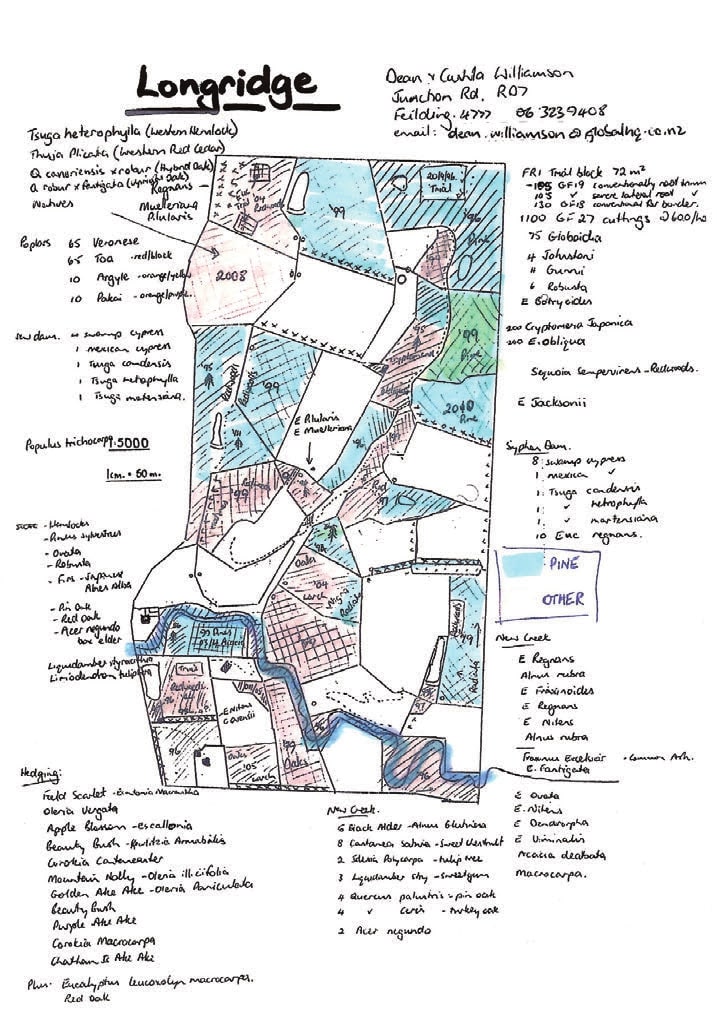
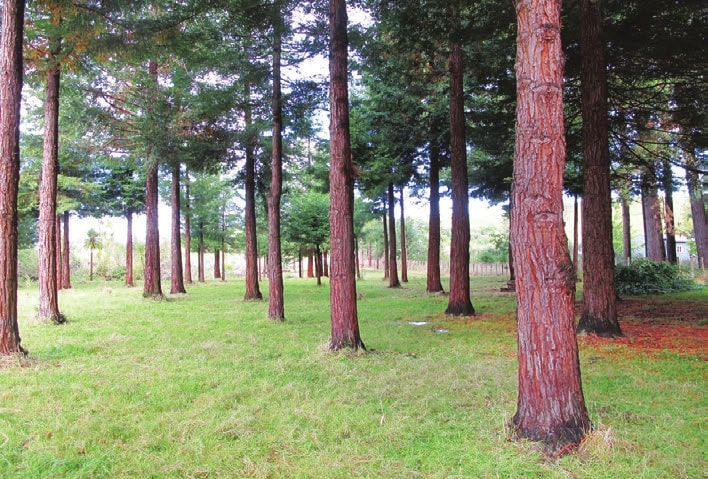
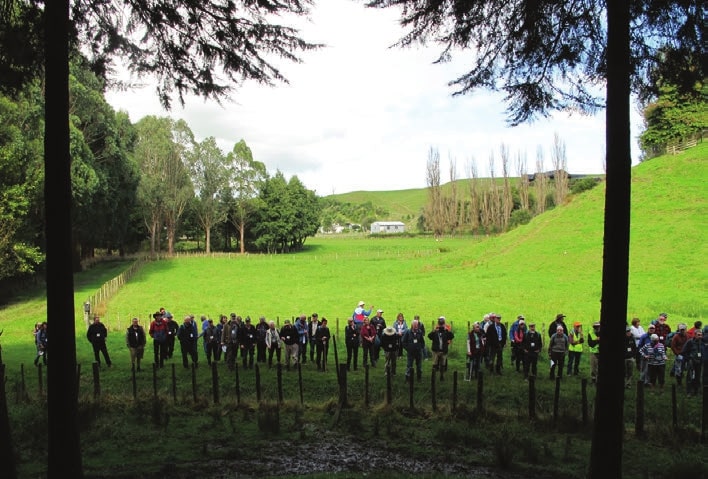
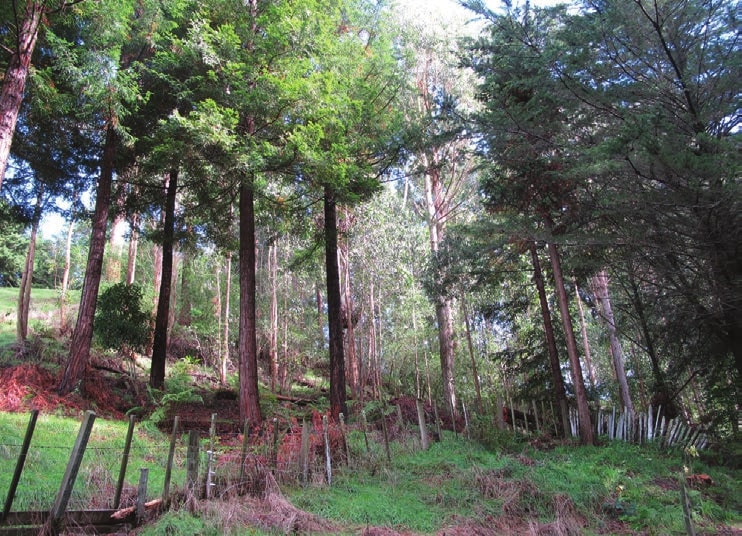
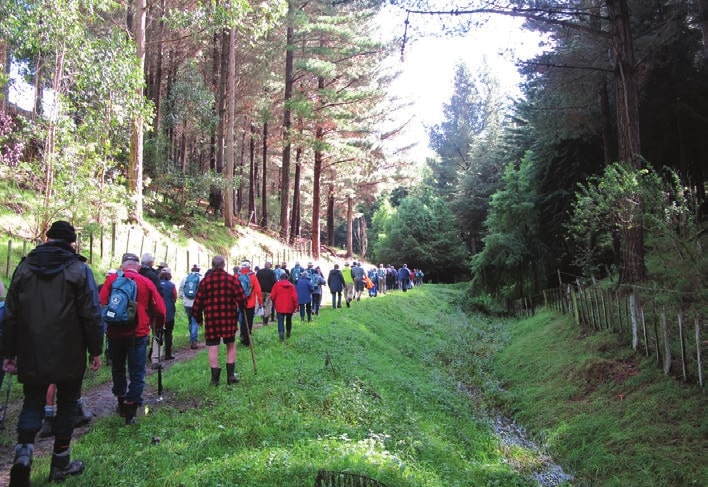
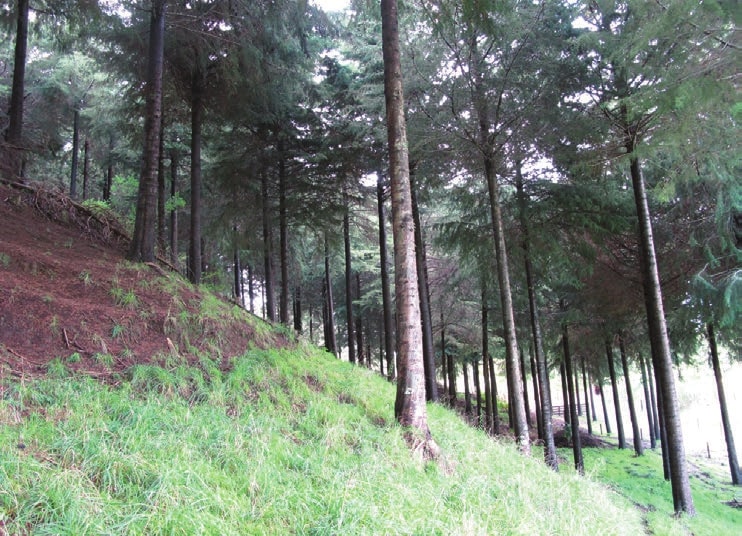
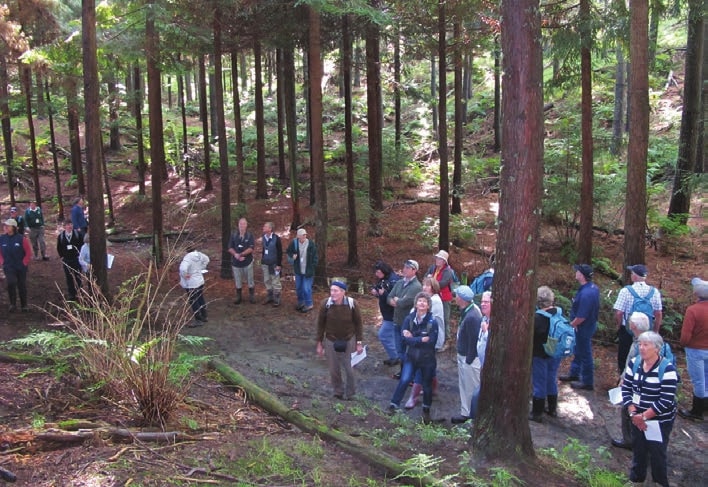

 Farm Forestry New Zealand
Farm Forestry New Zealand